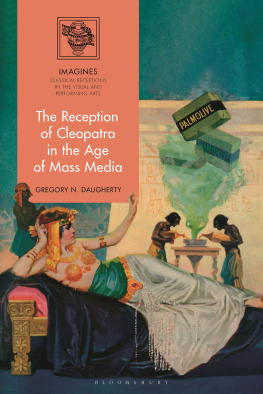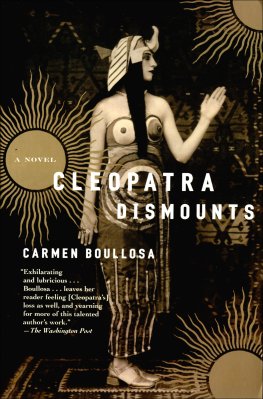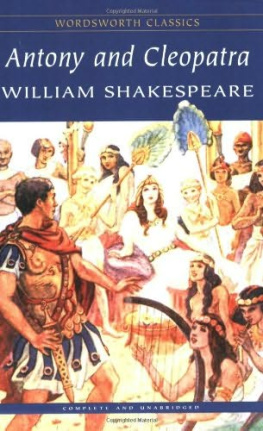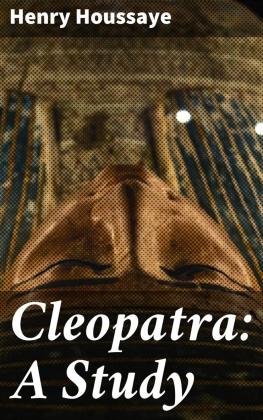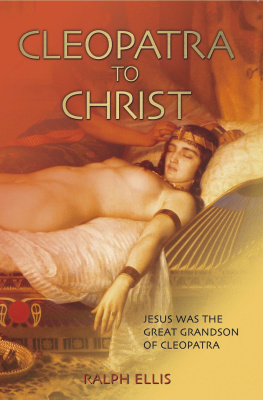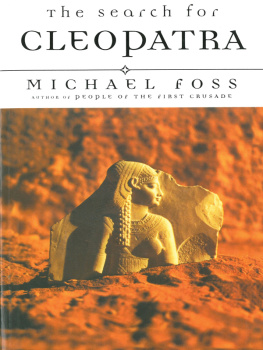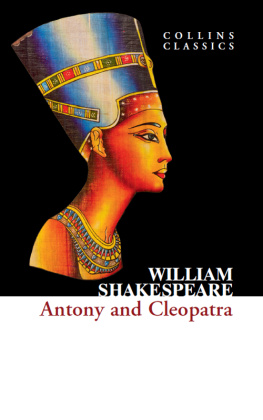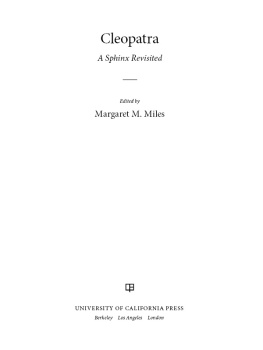
The Reception of Cleopatra in the
Age of Mass Media
This book is dedicated to Cathy my wife of infinite variety for indulging in my obsession with another woman for so many years. A lass unparalleled.
IMAGINES Classical Receptions in
The Visual and Performing Arts
Series Editors: Filippo Carl-Uhink and Martin Lindner
Other titles in this series
Ancient Greece and Rome in Videogames: Representation, Play, Transmedia, by Ross Clare
The Ancient Mediterranean Sea in Modern Visual and Performing Arts, edited by Rosario Rovira Guardiola
Ancient Violence in the Modern Imagination: The Fear and the Fury, edited by Irene Berti, Maria G. Castello and Carla Scilabra
Art Nouveau and the Classical Tradition, by Richard Warren
Classical Antiquity in Heavy Metal Music, edited by K. F. B. Fletcher and Osman Umurhan
Classical Antiquity in Video Games, edited by Christian Rollinger
Geographies of Myth and Places of Identity: The Strait of Scylla and Charybdis in the Modern Imagination, by Marco Benot Carbone
A Homeric Catalogue of Shapes, by Charlayn von Solms
Orientalism and the Reception of Powerful Women from the Ancient World, edited by Filippo Carl-Uhink and Anja Wieber
Representations of Classical Greece in Theme Parks, by Filippo Carl-Uhink
Screening Love and War in Troy: Fall of a City, edited by Antony Augoustakis and Monica S. Cyrino
The Smells and Senses of Antiquity in the Modern Imagination, edited by Adeline Grand-Clment and Charlotte Ribeyrol
Women in Classical Video Games, edited by Jane Draycott and Kate Cook

Contents
Postcard of Gertrude Eliot as Cleopatra
Cleopatra wielding a knife
Theda Bara with knife and snake bra
Helen Gardner as Cleopatra
Palmolive ad 3000 years ago , c. 1916
Palmolive ad Cleopatras vision, c. 1916
Palmolive ad Cleopatra Had Nothing on Me, 1942
Comparison of the Barrington cover and the Palmolive ad
Rhonda Fleming in Serpent of the Nile (1953)
Cover of Detective Comics 167 (1951)
Detail of ad for Cleopatra (Mankiewicz 1963)
Robot Cleopatra, Astro Boy manga (Tezuka 1969)
Screen shot of Glenn Close as Cleopatra in Maxie (Aaron 1985)
Cleopatras Door, Barbara Chase-Riboud, 1984
Screen shot of Leonor Varela, Cleopatra (Roddam 1999)
Screen shot of Elisa Moolecherry as Cleopatra (Bradshaw 2000)
Screen shot of Lindsey Marshal in HBOs Rome, episode 8 (Heller 2005)
Screen shot of Lindsey Marshal in HBOs Rome, episode 22 (Heller 2007)
Fanny Davenport as a stage Cleopatra (1894)
Screen shot of Beyonc as Cleopatra in Dreamgirls (2006)
I would like to acknowledge my gratitude to several colleagues for their generous assistance throughout this long process which began with a modest CAMWS paper in 1994, but which realized its full scope when Tom Sienkewicz invited me to give the Monmouth College Fox lecture in 2001. The critical importance of a welcoming venue was not lost on me. That was expanded when two of my staunchest allies in Reception Studies Meredith Safran and Roger Macfarlane joined me and others to form Antiquity in Media Studies (AIMS) to provide a consistent forum for our new field. Throughout the last thirty years I have been fortunate to have the advice and support of my dear friend and colleague, Monica Cyrino, the indefatigable champion of Reception Studies even before it got that label. I was especially blessed to have known Duane Roller, whose scholarship and counsel have been essential. I would also like to thank the brilliant Barbara Chase-Riboud for her own obsession with Cleopatra and her generous responses to my questions. Finally, I must thank my many students and my wife Cathy for their patient forbearance and willingness to help me navigate the labyrinth the Queen and her chroniclers left for us.
This study examines the reception of Cleopatra from around the beginning of the twentieth century to the present day as it has been reflected in popular culture, primarily in the United States of America. It is a reception history of an actual historical figure as opposed to fictional characters or legendary events, although many aspects of her story have been altered, enhanced and ignored since her own lifetime. It is intended as a scholarly resource for researchers in that it seeks to document receptions from this period, but since it treats them as genres and themes it should also serve as a textbook for students in courses on reception and film studies and even for the amusement of the general reader. It will include not only film and novels, but also comics, cartoons, TV shows, music, advertising, erotica and all manner of art, fine and otherwise. Dolls and toys are dealt with in passing as they would require extensive illustrations. Since it would require a book of its own by someone better versed in the genre, opera has been omitted. This book will focus on receptions intended to reach a large and non-elite audience and therefore reflects the changing tastes and concerns of the culture in which it thrived. The reception of Cleopatras actual life began during her own lifetime in the vicious propaganda campaign waged by Octavian against his rival Antony. Her subsequent reputation was collateral damage from that civil conflict but when combined with a life which was already quite remarkable, a rich legend was born.
At the outset I must acknowledge my debts to several scholars who paved the way for the modern study of the reception of Cleopatra. Lucy This study would not have been possible without their pioneering work and thoughtful analyses. I hope my own observations will help to place those films in their popular culture context.
Fuelled by Plutarch, Boccaccio and Shakespeare, Cleopatras image endured and grew through the Middle Ages and the Renaissance, morphing with every cultural and political shift. The process and the image changed drastically and swiftly with the advent of mass media, itself a rapidly evolving phenomenon. Cleopatra was elevated in American popular culture when British pulp fiction and French melodrama made her fodder for the infant film industry. My purpose is to examine how and why various forms of mass media popularized and altered the reception of a Ptolemaic dynast into a metaphor for the female experience in the rapidly changing contemporary American pop culture. She could be a Victorian New Woman, a deadly monster or a laughing flapper. The process reveals more about us than the Queen herself.
The narrative of the life of Cleopatra VII of Egypt displays the same infinite variety which Enobarbus so eloquently ascribes to the Queen herself. And the quantity of factual details is quite low. Students and non-specialists are often shocked to learn how little we know for certain about the events of her life, especially when crucial episodes in her reign do not happen to intersect with the adventures of certain particularly toxic Roman males.
There has been a welcome resurgence in interest in Cleopatra on the part of historians to which I credit the pioneering work of Grace Harriet Macurdy
A brief biography might be in order.Roman east.
Next page
